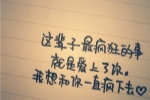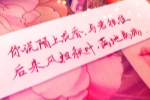
专八作文句型讲解【一】
考辅P42
1.IgaveTomthebook.//
2.Heboughthismothersomeflowers.//
3.Thebridgewasbuiltbyworkerslastyear.//
4.Wehavetofinishtheworktoday.//5.Hewilldohishomeworktomorrow.//
6.Wecleantheroomseveryday.//7.Thewriterspent3yearsonthebook.//
8.Itisabookwithalotofbeautifulpictures.//
9.Thebooksoldverywellduringthefirstweek.//firstweek.
10.Marywastheonlyoneintheoffice.//
11.Shefinishedherworkat10o’clock.//Shedidn’12.Shehadtotakeataxihomebecauseitwastoolate.
13.LizaandMikearrivedattheGreatWallintwohours.
14.Theywerehappytogettothetop.//
15.TheyenjoyedthemselvesontheGreatWall.//
16.ThepostmansentSusanandTommyapaperbox.
17.Theyopeneditandfoundapresentfromtheirfriend.
18.Theybothlikedthepresentandfeltveryhappy.
19.Alicedidn’tfeelwelltoday,soshewenttothehospital.
20.Thedoctoraskedhersomequestions.//
21.Thedoctordidn’tgiveheranymedicineintheend.
(全真1)
1.ThecapitalAirporthasbeeninusefor20years.//
2.ThecapitalAirportisthelargestoneinChina.//
3.Ihavenevertakenaplane.MyfriendLiPing,either.//
(全真2)
1.Fathergave$20formetobuysomebooks.//
2.IwasexcitedwhenIsawsomanygoodbooksinthebookstore.
3.ButsomebookswouldcostmorethanIhave.//
ButIdidn’//(全真3)
1.ManyChinesefriendswenttotheparty.2.Tonywasgivenalotofpresentsbyhisfriends.//Tony’
3.SeeinghisChineseteacheratthepartymadeTonyveryhappy.//(全真4)
1.Iwanttoeatsomething.//2.Therefrigeratorisempty.//3.Bobspentfifteenyuanonthehamburger.///(全真5)
1.Mr.Wangdoesn’tworkinthatfactoryanylonger.//
2.Mr.Wanglefthomeearlierinordertocatchthebus.3.Mr.Wangfindsitnoteasytogetalongwiththatyoungguy.//(专家1)
1.Manypeoplewentshoppingyesterday.
2.Janespent4hourstobuyNewyeargifts.//
3.Shewassotiredthatshecouldn’twalkanylonger.//
(专家2)
1.Myfriendssaidtome,“Areyoufree?”
2.Shewantedmetogoshoppingwithher.
3.Shethinksitapleasuretogoshoppingwithafriend.
专八作文句型讲解【二】
邀请信:
It is my pleasure / a great honor for me to invite you to ...
I am sure that you will enjoy yourself here.
I hope that you won’t decline my invitation.
感谢信:
It was kind and generous of you to do this for me and I do appreciate it more than I can say.
Thank you from the bottom of my heart for ...
道歉信:
I am terribly sorry that I have done ...
I hope that the settlement of the matter will meet your wishes.
I regret to inform you that I am unable to do ...
询问信:
I am writing to you in the hope that I may obtain ...
I shall be grateful if you can offer me the information about ...
I would like some detailed information about ...
求职信:
I wish to apply for a position with your company.
I am very interested in exploring a position as a ... with your company.
I trust myself that I have the appropriate qualifications and experience for this post.
投诉信:
I am writing to express my dissatisfaction with / at ...
I am completely disappointed to find ...
专八作文句型讲解【三】
二、说明文的分类:按照不同的标准,说明文可分不同的类别。
1、通常,依据说明对象与说明目的的不同,把说明文分为事物说明文和事理说明文两大类。说明对象是具体事物,说明目的是使读者了解、认识这个或这类事物的特征,我们称之为事物说明文,如《松鼠》、《中国石拱桥》等;说明对象是某个抽象事理,说明目的是使读者明白这个事理,我们称之为事理说明文,如《死海不死》、《向沙漠进军》等。其实,在一篇说明文中,介绍事物与阐释事理往往是交错使用的。
2、我们还根据说明语言的不同特色,表达方式的使用情况的不同,把说明文分为平实的说明文和生动的说明文两种。生动的说明文又叫文艺性说明文。
三、说明事物要抓住特征:所谓特征是这一事物区别于其他事物的标志。只有抓住特征才能说明白这一事物或事理的独特之处。
四、说明的方法:为了把事物特征说清楚,或者把事理阐释明白,就要使用恰当的说明方法。常用的说明方法有如下9种:
1、举例子:为了说明事物的情况或事理,有时光从道理上讲,人们不太理解,这就需要举些既通俗易懂又有代表性的例子来加以说明。如《中国石拱桥》把古代的赵州桥和卢沟桥作为具有代表性的例子,对我国建设石拱桥历史的悠久、成就的杰出作了说明。
2、分类别:要说明事物的特征或事理,从单方面往往不容易说清楚,可以根据形状、性质、成因、功能等方面的异同,把事物或事理按一定的标准分成若干类,然后依照类别,逐一加以说明。如《向沙漠进军》一文将沙漠进攻的方式分成“游击战”和“阵地战”两类。
3、列数据:数字是从数量上说明事物特征或事理的最精确、最科学、最有说服力的依据。如《死海不死》一文用大量的数字说明死海之所以浮力大的原因,非常清晰。
4、作比较:为了把事物或事理说得通俗易懂,有时可以从人们已有的感性知识出发,利用人们生活中熟悉的事物或事理作比较,从而唤起读者的想象,获得一个深刻的印象。如《苏州园林》一文中将苏州园林同其他园林作比较。
5、下定义:为了突出事物或事理的主要内容或主要问题,常常用简明扼要的语言给事物下定义。这是说明事物特征或事理、揭示事物或事理的本质的一种方法。如《食物从何处来》一文中就给“食物”“自养”“异养”“光合作用”等概念下了定义。
6、打比方:打比方就是修辞方法中的比喻。在说明文中运用打比方的方法,可以使人们不了解的事物或抽象的事理变得具体、生动、形象。如《中国石拱桥》中“石拱桥的桥洞成弧形,就像虹”,让读者更形象、更清晰地了解了石拱桥的特点。
7、画图表:有些事物的关系抽象而复杂,仅用文字说明还不能使读者明白,这就需要附上示意图,或按比例精确绘制出如产品设计图、军事行动路线图等。有时,被说一明的事物项目较多,也可制成统计表,将有关数字分别填人表中,使人看了一目了然。
8、作诠释:这是对事物进行解释的一种说明方法。下定义与作诠释的区别是:定义要求完整,即定义的对象与所下定义的外延要相等,并且要从一个方面完整地揭示概念的全部内涵;而诠释并不要求完整,只要揭示概念的一部分内涵就可以了,并且解释的对象与做出的解释外延也可以不相等。如“词是能独立运用的最小语言单位”这个定义,主语与宾语的内涵与外延完全一致,可以颠倒。即说“能独立运用的最小的语言单位是词”也行。而“铀,是银白色的金属”,则是诠释,其内涵与外延都不相等,“铀”的外延要小于“银白色的金属”的外延,因而主语与宾语不能倒过来说,即不能说“银白色的金属是铀”。作诠释不仅可以用来解释概念、定理、定律等,也可以用来解释事物或事理的性质、特点、功用和原因等。作诠释的语言虽不像下定义那样要求严格,但也须简明、准确、通俗易懂。如《死海不死》一文“这大概就是‘死海’得名的原因吧。”用的便是作诠释的说明方法,这里的“死”指的是鱼虾草木的.死,因为死海咸度很高,生物不能生长,所以叫“死海”,这就部分地揭示了死海的特征。
9、摹状貌:就是通过具体的描写揭示事物的特征,有助于把被说明的对象说得更具体、生动。如《中国石拱桥》中“这些石刻的狮子,有的母子相抱,有的交头接耳,有的像倾听水声,千态万状,惟妙惟肖”。这样的说明显得十分生动、活泼。
五、说明的顺序:有条有理地说明,才能把事物的特征或事理介绍清楚。常见的说
明顺序有:
1、时间顺序:即以事物发生、发展的时间先后来安排说明顺序,从而写出事物的发展变化情况。这种顺序一般用于人物的生平介绍、科学观察记录,说明事物或事理发生、发展或制作过程一类的说明文。
2、空间顺序:即按照事物的空间存在形式,或从外到内,或从上到下,或从前到后,或由远及近依次进行说明。这种说明顺序,一般用于说明事物的形状、构造特征。
3、逻辑顺序:即按照事物或事理的内部联系或人们认识事物的过程来安排说明顺序。事物的内部联系包括因果关系、层递关系、主次关系、总分关系、并列关系等;认识事物或事理的过程则指由浅人深、由具体到抽象等等。如《死海不死》一文,由现象到本质(成因揭示了死海的特征,并介绍了死海的现状和未来,层层深入,逻辑条理十分清楚。
六、说明文的语言:说明语言的准确性,是说明文语言的先决条件。表示时间、空间、数量、范围、程度、特征、性质、程序等,都要求准确无误。说明的实用性很强,稍有差错,会失之毫厘,谬以千里。特别要注意说明文中使用的术语和修饰限制性的词语,它们往往体现了说明语言的准确性。如“我国的石拱桥几乎到处都有”,其中“几乎”对“到处都有”作了限制,意思是接近于“到处都有”,因为事实上不可能到处都有。在准确的前提下,说明的语言有的以平实见长,有的以生动活泼见长。
七、说明文的结构:说明文常用的结构模式有两种:
1、总分式:包括总——分、分——总、总——分——总等,事物说明文多用总分式,其中“分”的部分又常按并列方式安排。
2、递进式:事理说明文多用递进式结构,一层一层地剖析事理。
说明文的阅读,从全国各地的中题看,所选文章以课外为主;内容更关心环境保护、高科技或身边的人文环境。题型由主观题占主导地位,其中开放性试题已占一席之地,并有扩大的趋势。所谓“开放”是指解题思路和试题答案的多元化,只要言之成理就行,以鼓励学生的创新意识和探究精神。在训练理解能力的同时,训练表达能力,对答案的表述不能只靠一个符号或一个词语来完成,要写成一句或一段完整的话。如2000年湖北省恩施州中考试题的说明语段是《西部地区》,其中的第5题是你从第二段获取的主要信息是什么?在西部大开发中,你认为恩施州最具开发价值的资源有哪些?”在答题的同时,一方面训练学生综合运用知识的能力,另一方面要生为本地建设出谋划策,培养他们的主人翁意识。这个开放性试题出得非常有新意。
专八作文句型讲解【四】
Therearesomecherriesinthebasket.(一般疑问句,否定回答划线部分提问Kittylikesthebluedress.(用thepinkdress改为选择疑问句Don`tplaywithfires.(换一种说法
Joelikesreading.Dannylikesreadingtoo.(把两句连成一句Pleaseeatsomecakesandbiscuits.(改为否定句划线部分提问Thereissomewaterintheglass.(划线部分提问划线部分提问Whatdayistoday?
What`sthedatetoday?
Whatdoyouusuallydoafterdinner?
Whichpearsdoyouwant,thegreenonesortheyellownoes?Whichwesternholidaydoyoulikebest?Whenisit?
WhatdoyoudoattheLanternFestival?
5B2
Thosebooksareours.(同义句划线部分提问划线部分提问
ThosecrayonsareDanny`s.(.(用Alice改为选择疑问句Arethesetheirschoolbags?(单数句划线部分提问
Theyridetheirbicyclestothepark.(用May改写
Thecocooniswhite.(用browng改为选择问句划线部分提问Heisfouryearsold.(改为一般过去时
Iwasathomeyesterdayevening.(改为一般疑问句
Thecaterpillarslikeeatingleaves.(改为单数句划线部分提问划线部分提问
WhatdoyoueatattheMid-autumnFestival?(根据实际情况回答
专八作文句型讲解【五】
1) Many nations have been faced with the problem of ……
2) Recently the problem has been brought into focus.
3) Recently the phenomenon has become a heated topic.
4) Recently the issue has aroused great concern among ……
5) Nowadays there is a growing concern over ……
6) Never in our history has the idea that …… been so popular.
7) Faced with ……, quite a few people argue that ……
8) According to a recent survey, ……
9) With the rapid development of ……,
10 When it comes to…, (当说到…
二、列举观点
I.Some people think/believe that…,
Other argue/claim that the opposite/reverse is true
1.Obviously television has both advantages and disadvantages.
2.Living in a city has both advantages and disadvantages.
3.Compared with cars,bikes have their advantages and disadvantages. ,
4.Although computers bring people a lot of convenience,they have many disadvantages.
5....has many advantages.For example,…
6. However,just as every coin has two sides,…has it’s disadvantages.
II…play(san important role/part in……
1.Computers play an important role in science and technology.
2.Computers play a more and more important role in our life.
3.Computers play an increasingly important role in our studies.
4.Education plays an important part in developing our mind.
5.Addiction to alcohol and drugs plays a role in homelessness.
6.Advertisement plays an informative role in our daily life.
7.In the past,letters played a decisive role in long-distance communication.But now,telephone,email,and fax have taken their place.
III.With the development of…
1.With the development of our economy,many Chinese families can afford a car.
2.With the development of our economy and society,pollution is more and more serious.
3.With the rapid development of Science and technology,people can get a college degree by taking online-courses at home.
4.With the current social and technological developments,employees with more knowledge and higher academic degrees are needed.
5.With the rapid increase of China's population,housing problem is becoming more and more serious.
6.With more and more women entering the society,people's attitude towards women is changing.
7.With the deepening of Chinese reform and opening up, an increasing number of (a growing number of,a significant number of
families can afford a car.
三、陈述自己观点
There is probably some truth in both arguments/statements,but…
四、批驳
1)It is true that ……, but one vital point is being left out.
2) There is a grain of truth in these statements, but they ignore a more important fact.
3) Some people say ……, but it does not hold water.
4) Many of us have been under the illusion that……
5) A close examination would reveal how ridiculous the statement is.
6) It makes no sense to argue for ……
7) Too much stress placed on …… may lead to ……
8) Such a statement mainly rests on the assumption that ……
9) Contrary to what is widely accepted, I maintain that ……
10) No one can deny the fact that ……
11) The idea is hardly supported by facts.
12) Unfortunately, none of the available data shows ……
13) Recent studies indicate that ……
14) There is sufficient evidence to show that ……
15) According to statistics proved by ……, it can be seen that ……
五、结尾句型 :
英语议论文多以简要总结全文或对所讨沦的问题提出解决办法来结尾。总结全文时除常用到in one/a word,generally speaking,to conclude等外,没有固定模式。提出解决办法时却常使用下一句型:
1) From what has been discussed above, we can draw the conclusion that ……
2) It is high time that strict measures were taken to stop ……
3). We should take measures to control the rapidly increasing world population.
4). We’d better take effective measures to prevent students from cheating on exams.
5). The government decided to take strong measures against drug abuse.
6). Urgent measures should be taken to prevent terrorists from carrying out further attacks.
7) It is necessary that steps should be taken to ……
8) In conclusion, it is imperative that ……
9) There is no easy method, but ……might be of some help.
10) To solve the above-mentioned problem, we must ……
11) In summary, if we continue to ignore the above-mentioned issue, more problems will crop up.
12) With the efforts of all parts concerned, the problem will be solved thoroughly.
13) We might do more than identify the cause ; it is important to take actions to ……
14) Taking all these into account, we ……
15) Whether it is good or not /positive or negative, one thing is certain/clear……
六、其他句型
I、There be结构
There+be+主语+(修饰成分,表示客观存在的'人或事物。 There must be a lot of fuel in the tank.
There remains nothing more to be done.
There is no point in talking about it again.
There is something you don't know.
There is not enough time to do the work. .
II、名词化结构
名词化结构用以表明抽象思维的逻辑性和概念化,从而使语体更加正式、更加具有书面语风格。
1.由of连接主谓关系
That the earth revolves around the sun causes the changes of the seasons.
名词化:The revolution of the earth around the sun causes the changes of the seasons.
2.由0f连接动宾关系
One of the most important natural phenomena is that energy is transmitted from one point to another in waves.
名词化:One of the most important natural phenomena is the transmission of energy from one point to another in waves.
3.用of连接含有by的短语,把简单句转换成名词短语
专八作文句型讲解【六】
(一)改写一般疑问句:
(1)原句中有be动词的,将be动词提前,其他顺序不变。
例如:Thisisacat.变为Isthisacat?
(2)原句中有情态动词的(can/may/shall/would)将情态动词提前,其他顺序不变。例如:Hewouldlikeapie.变为Wouldhelikeapie?
(3)原句中是一般动词的,在句首加助动词do或dose(用于主语是第三人称动词单数的句子),其他顺序不变。例如:Iplaytheguitar.变为Doyouplaytheguitar.
(4)原句中的some变any。
注:以情态动词开头的一般疑问句,并且要求对方做肯定回答的`some不变。
(5)原句中的第一人称改为第二人称。例如:Iamanurse.变为Areyouanurse?
(6)以dose开头的一般疑问句,原来动词的第三人称单数形式要变回原形。例如:Hereadsastorybook.变为Dosehereadastorybook?
(二)改写否定句:
(1)原句中有be动词的,直接在be动词后面加not。例如:Itisadog.→It’snotadog./Itisn’tadog.
(2)原句中有情态动词的,直接在情态动词后加not。
例如:Iwouldlikeahotdog.→Iwouldnotlikeahotdog.
(3)原句中是一般动词的,在一般动词前加don’t或doesn’t(用于主语是第三人称单数的句子),doesn’t后面用原型。例如:Iseethreehamburgers.→Idon’tseethreehamburgers.
原句中的some变any例如:Ihavesomebreadan
dmilk.→Idon’thaveanybreadandmilk.
(4)以let开头的祈使句,如果是letus或letme,直接在其后加not;如果let后面其他人称代词宾格(you、him、her、them、it)就在let后面加助动词don’t。例如:Letusgotothepark.→Letusnotgotothepark.再如:Letthemdohomework.→Don’tletthemdohomework.
(三)对划线部分提问:
对划线部分提问,就是先把一个陈述句的划线部分去掉,然后变为一个特殊疑问句:一是特殊疑问句+一般疑问句;
二是特殊疑问句+陈述句(对主语或主语的定语提问,therebe结构除外)
⑴划线部分是人,用who提问。
⑴划线部分是主语,用who提问,who后面的动词要用第三人称单数形式。如:Whois;Wholikes;Whohas?
方法:who+原句的剩余部分
例如:①HelenandMikearelisteningtomusic.
→Whoislisteningtomusic?
②Ihavesomemodelplanes.
→Whohasanymodelplanes?
⑵划线部分是表语,用who提问。
方法:Who+剩余部分的一般疑问句形式
⑵划线部分是事或者物,用what提问。
方法:what+剩余部分的一般疑问句形式。
注:如果原句是therebe句型,直接用What’s+地点状语来提问。例如:①Wewouldliketobuysomethingsforaparty.
→Whatwouldyouliketobuyforaparty?
②Therearealotofcakesintheplate.
→Whatisintheplate?
⑶划线部分是物主代词或名词所有格,用Whose提问。
方法:⑴划线部分是主语的定语时,Whose+剩余部分
例如:Ourclassroomisbright.
→Whoseclassroomisbright?
⑵划线部分是表语或表语的定语时,Whose+剩余部分的一般疑问句形式例如:①ThewomanisSuYang’steacher.
→Whoseteacheristhewoman?
注:对某部分的定语提问,被修饰的部分跟随特殊疑问句往前提②ThispurseisYangLing’s.
→Whosepurseisthis?
⑷划线部分是地点,用where提问。
方法:where+剩余部分的一般疑问句形式
例如:TheyarehamingaMathslessonintheclassroom..
→WherearetheyhavingaMathslesson?
⑸划线部分是“多少”,用howmany或howmuch提问。
方法:⑴句中是可数名词的用Howmany+剩余部分的一般疑问句形式例如:Therearefifteentreesintheplayground.
→Howmanytreesarethereintheplayground?
⑵句中是不可数名词的用Howmuch+剩余部分的一般疑问句形式例如:Ihaveaglassofjuiceforbreakfast.
→Howmuchjuicedoyouhaveforbreakfast?
⑹划线部分是时间,用when或whattime(具体的几时几分)提问。方法:⑴when+剩余部分的一般疑问句形式
例如:SuYangandSuHaiareathomeonSundaymorning.
→WhenareSuYangandSuHaiathome?
⑵问具体的时间直接用Whattimeisit?或What’sthetime?问
例如:It’sthreeforty-five.
→Whattimeisit?或What’sthetime?
专八作文句型讲解【七】
英文书信的构成可分为8个部分:
信头(Heading
日期(Date
收信人姓名及地址(Inside Name and Address
称呼(Salutation
信文(Body of the letter
结束语(Complimentary close
署名(Signature
附言(P. S.
(1信头(Heading
信头是指发信人的单位名称或地址。一般情况下发信人只需把自己的地址写(打字,手写均可在信的右上角,离开信纸的顶头约1英寸,占二三行或四行均可,格式如下: ①齐头式
②缩进式
注意:写地址的次序与中文不同,应先写门牌号码街道,然后城市和国名。写地址时采用齐头或缩进式,以及每行后要不要加标点符号,都没有固定的规定。如写给经常往来的亲友,这项地址也可以省略。
(2日期(Date
写日期注意下列各点:
①年份应写全,例如不能用“99”来代替“1999”;
②月份应写英文名称,除May, July外,可用缩写,如:Sep., Oct.。但不要用数字来代替,如7/4/99 或7, 4, 99,因为在英国此日期代表 7th April,1999,而美国则代表4th July,1999。
③日期可用1,2,3,4…11,12…21,22…31等,也可用lst,2nd,3rd,4th…11th,21th…22nd…31st等。
日期的几种写法:
a.July 7,1998
b.1st October, 1998
c.30 Nov., 1997
d.Sep. 3rd, 1999
④特别注意英文书信日期应紧接着写信人地址下一行,不能像写中文书信那样写在书信签名之后,这是很多学生的常见错误。
精选范文
①
②
(3收信人姓名及地址(Inside Name and Address
写信人的地址和日期写好以后,接着就要写收信人的姓名和地址,一般的事务信件或给较生疏的.朋友的信件要写,而在给极熟的朋友的信中则可省去。这一项写在日期下一行的左上角。收信人姓名写一行,收信人地址可分两行或三行写,和写信人的地址一样,上下可取齐,也可以向右缩进。在姓名前一般要加上称号,称号因人而异。
①对普通男子用Mr;
②对未婚女子用Miss;
③对已婚女子用Mrs,对婚姻状况不明确的通常用Ms(后跟本人姓;
④对男子用Master;
⑤对教授或博士(医生用Prof.或Dr.
精选范文
(4称呼(Salutation
称呼指的是信文开头的那种称呼,如Dear , Mr, Uncle,各种称呼因人而异。在称呼后面一般是用逗号,但也有用冒号的。现归纳如下:
①对父母、兄弟、姐妹等;
a.Father,
b.My dear Mother,
c. Dear Sister,
d. Dear Tom,
②对亲戚:
a.My dear Auntie,
b.Dear Cousin,
c.My dear Cousin,
③对朋友、同学
a.My dear friend,
b.Dear Mr Jackson,
c.My dear Mr Jackson,
d.Dear Sir,
④对未婚女子:
a.Dear Miss Luce,
b.My dear Miss Luce,
⑤对一般女子,不论是否结婚:
a.Madame,
b.Dear Madame,
⑥对已婚女子:
a.Dear Mrs Helen Jackson,
b.My dear Mrs Helen Jackson,
⑦对公司、工厂、学校等:
a.Dear Sirs,
b.Sirs,
c.Gentlemen,
(5信文(Body of the letter
信文是信件的主体部分,也就是信的内容。正文应在称呼下两行开始。信的开头第一个字母通常和称呼开头第一个词平齐。也有往后退四个或八个字母的。下面介绍一些开头语和结尾语。
开头语
①相当于中文的“敬君者”。
a.I beg to inform you that…
b.I beg to take this opportunity to inform you that …
c.I have the honor to address you that…
d. I write in a hurry to inform you that…
e.I have the pleasure to tell you that…
f. I'm very much delighted to inform you that…
②相当于中文的“接读某月某日来信,一切知悉”。
a.I thank you very much for your letter of May 20th …
b.Your letter of May 20th has been received with thanks.
c.It gives me great pleasure to receive your kind of May 20th.
d.In answer to your kind letter of May 20th, I deeply regret that …
e.I have received your kind letter of May 20th.
f.Words can't express my delight on finding your favor of yesterday on my desk this morning.
g.Your letter dated May 20th has been received.
结尾语
采用三种方法:
①采用分词短语:句末用逗号,不用句号。例如:
a.Waiting for your good news,
b.Looking forward to your early reply,
c.Hoping to hear from you soon,
d.Hoping you are enjoying good he
alth,
cerely,
Barbara
④感谢信
Dear Sir,
With feelings of deep gratitude I address y
参考词语
senior grade three
appreciate
spare
⑤下面是某中外合资企业刊登在China Daily上的一则招聘广告。 Office secretary, with experience in book-keeping, Type-writing Public relations, op
专八作文句型讲解【八】
1.审清题意,理解所要写作的书信是何种类型,收信人是什么身份,应采用什么语气和格式来完成写作。
2.罗列词汇,根据提示,将可能用到的词汇、短语、句型搜集整理。
3.串句成篇,适当添加连接词和过渡词,必要时增加相关细节以使行文连贯。
4.检查润色。

















